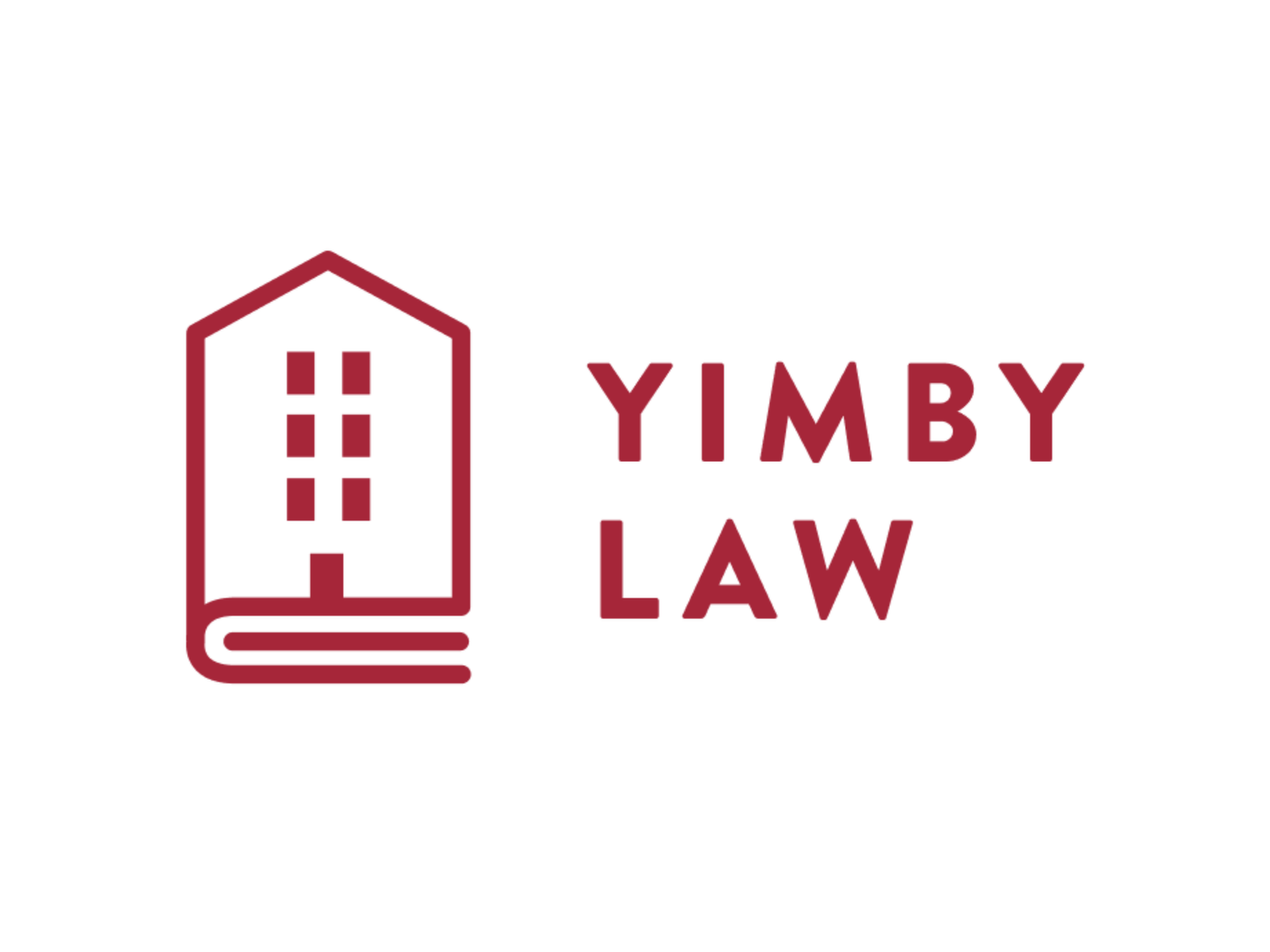An Introduction, a Housequake, and Zombie Easements
/Welcome back to the YIMBY Law Journal! It’s been a while, so let’s catch up.
Who’s This?
I’m Keith, and I’ve been managing YIMBY Law’s work on the Campaign for Fair Housing Elements since April. I’ll be writing here on Tuesdays as often as I can.
I’m a lawyer with experience in public-interest litigation. Before YIMBY Law, I worked for seven years at the nonprofit Institute for Justice, where I helped set a few precedents. IJ taught me that every great case tells a story. I’ve met so many people in my career, and heard too many stories about land-use bureaucracy making life hard. I came to YIMBY Law to help change that.
Bad laws change when good stories persist. My signature case at IJ was a challenge to Nashville’s home-business ban, where I represented a record producer and a hairstylist who wanted to work from home. Public comment was against us in 2016, but my clients and I stuck to our beliefs, and by early 2020 we’d built enough public support for a change.org petition to go viral. Then the pandemic hit, everyone had to work from home all of a sudden, and Nashville repealed the ban (sort of: the case is still ongoing). I’m confident nothing would have changed if my former clients hadn’t made their stories public so many years ago.
Housequake!
Let’s turn to a story about lots of new homes coming to the Bay Area soon.
California law requires every city to produce a document called a “housing element.” In simple terms, the state assigns every city a number of new homes to plan for, and a good housing element shows how the city will make those homes legal to build. Some cities write bad housing elements, and the state Department of Housing and Community Development (“HCD”) can disqualify them if they’re bad enough. One potential consequence for a disqualified housing element is called the “builder’s remedy.”
The builder’s remedy preempts all local zoning for certain affordable housing projects. This removes a huge barrier to home construction, which is why we’re so excited about it. But the builder’s remedy only applies in cities without HCD-certified housing elements, so it’s not available in most places, most of the time.
Every eight years, California cities have to update their housing elements. And with new ramped-up housing goals set by the state, cities that are clinging to old, exclusionary zoning rules are struggling to convince HCD that they can meet their fair share. Most Southern California cities missed their deadline, and Redondo Beach now stands to gain 2,290 new homes thanks to the builder’s remedy. In the Bay Area–specifically anywhere in Alameda, Contra Costa, Marin, Napa, San Francisco, San Mateo, Santa Clara, Solano, or Sonoma Counties–the deadline for new housing elements is January 31. This deadline is now close enough that we can predict dozens of Bay Area cities will miss it.
That means Bay Area homebuilders can expect cities without zoning on February 1. HCD recently confirmed this timing in a letter to East Bay for Everyone’s Kevin Burke. San Francisco is scrambling.
We’re calling for a housequake to make the most of this zoning jubilee. If you have a potential builder’s remedy project, let us know, and get ready to tell your zoning authorities to shut up already, damn.
Zombie Easements
Last week, we joined the California Renters’ Legal Advocacy and Education Fund on an amicus brief in support of a 450-home project in Riverside. The city has cleared the project, and is even counting on it in its housing element. But a neighboring grocery store got a judge to block the project, based on a 1979 easement over one corner of the project site.
Easements are a type of private property restriction. The easement in this case gives the grocery store “ingress and egress” rights over a small strip of road so that delivery trucks can drive across the project site and get to the back of the neighboring store. Grocery stores and apartment complexes work these things out all the time, and we don’t see that the project developer in Riverside is planning to block the store’s access. Instead, the grocery store persuaded the trial court that the easement prohibits any apartments anywhere on the site. The project developer has appealed.
We and CaRLA weighed in to remind the Court of Appeals that there’s a strong public interest in getting homes built, and that the trial court’s injunction blocking 450 homes harms the public interest. What’s more, caselaw warns against interpreting “nonexclusive” easements (which this easement is) to prohibit entire land uses (as the trial court’s injunction does). But that’s effectively what the trial court did in Riverside, and we hope it gets reversed so Riverside can gain 450 new neighbors.
Many easements are useful: they help reconcile private property with public infrastructure, among other things. But as the Riverside case shows, easements can also be turned into anti-housing zombies. That’s not what easements are supposed to do, and we’re watching this case so that California doesn’t suffer an outbreak of zombie easements.

